As we move into the New Year, businesses are scheduling out their training plan, deciding which items are priority for whom and when. One of the top priorities for your business this year, regardless of the business you are in, is training your employees in first aid, CPR and AED use.
Your employees will get injured, no matter what you do. Their injury might not have anything to do with the job; they might suffer a heart attack on site (as cardiovascular disease is still the number one killer in the U.S.) Researchers found that EMS responses were more likely to meet 8-minute and 15-minute national benchmarks in high-income areas than in low-income communities. If you have an employee with a heart attack on site, a suffocation, a choking, you can’t wait even the 8 minutes in the best area. According to EHS, “shock, bleeding, poisonings, burns, temperature extremes, musculoskeletal injuries, bites and stings, medical emergencies and distressed employees in confined spaces are just a sampling of the first aid emergencies which might be encountered in your business. These risks are compounded when employees don't feel well. Their lack of concentration can result in costly injuries.”
They need help immediately, and the best people to help them are their fellow employees.
First aid training is a solid investment in keeping your employees well-trained and in good health, and, depending on your location, you may already be legally obligated to provide the training. According to EHS, the Occupational Safety and Health Administration (OSHA) requires businesses to provide first aid and CPR training to employees in the absence of a nearby clinic or hospital. OSHA also demands that the type and depth of the training be specific to the needs of the workplace.
AED training for your team
An AED in the workplace increases the chance of survival in case of a cardiac arrest in the workplace substantially, but only if employees know how to use it. According to AED.com,
More than 350,000 Americans suffer from cardiac arrest each year. Approximately 10,000 of these sudden cardiac arrests occur in the workplace (OSHA). OSHA also reports that waiting passively for emergency medical personnel to arrive — without performing bystander CPR — results in only a 5-7% survival. Other studies show that immediate defibrillation can lead to up to 60% survival rate one year after a sudden cardiac arrest.
AED training is provided by many organizations, and it can be included in your first aid and CPR training requirements. Recently, SHRM published the question if AEDs are a benefit or burden. The key difference between the two states is the same with all safety equipment: if the team doesn’t know how to use it, if it can’t be found, or if it has expired.
First aid, CPR training, and AED training are beneficial and will save lives if properly done.

.png?width=500&height=500&name=Blue%20and%20White%20Classic%20Shield%20Financial%20with%20Star%20Logo%20Design%20(1).png)


